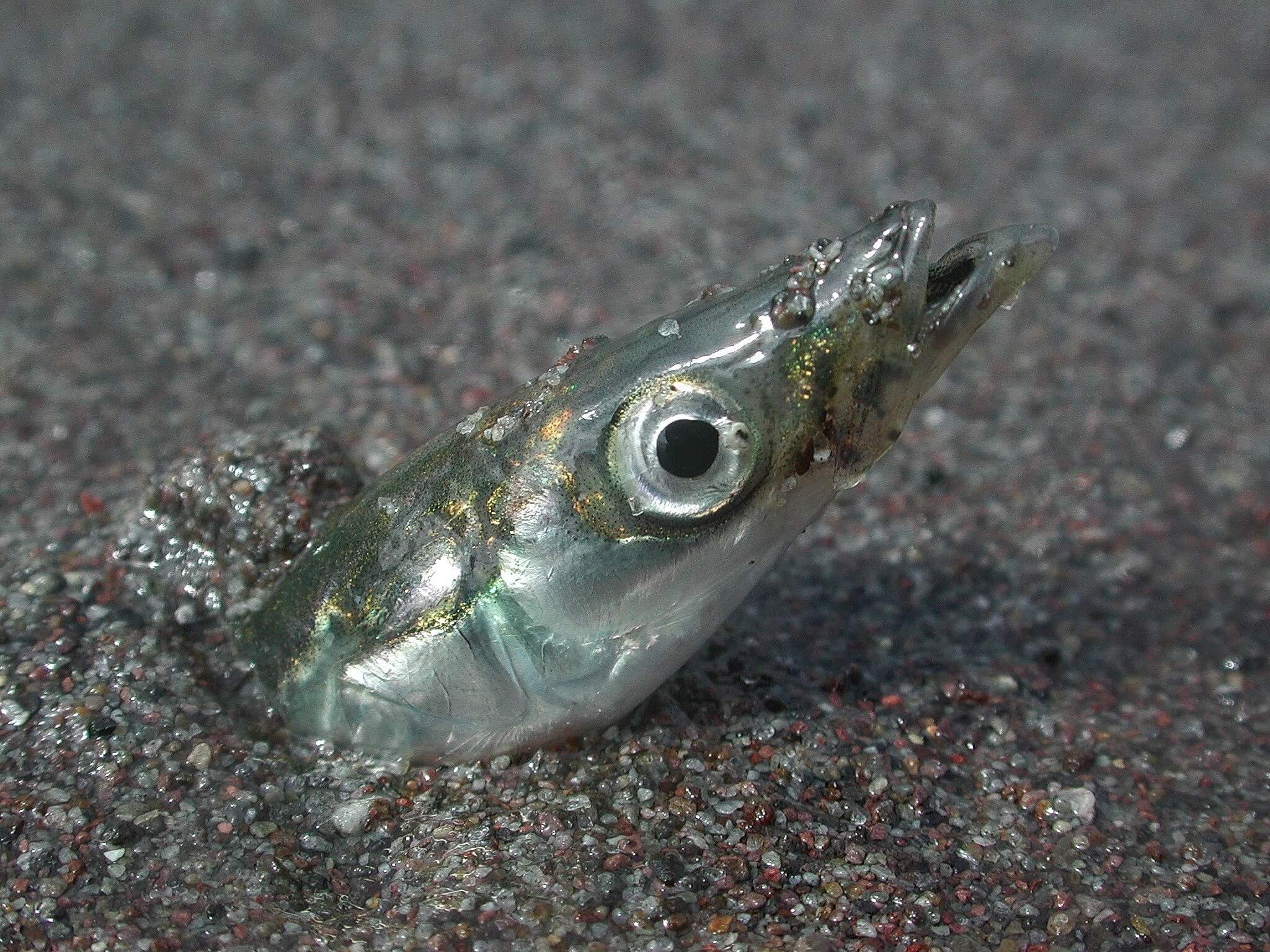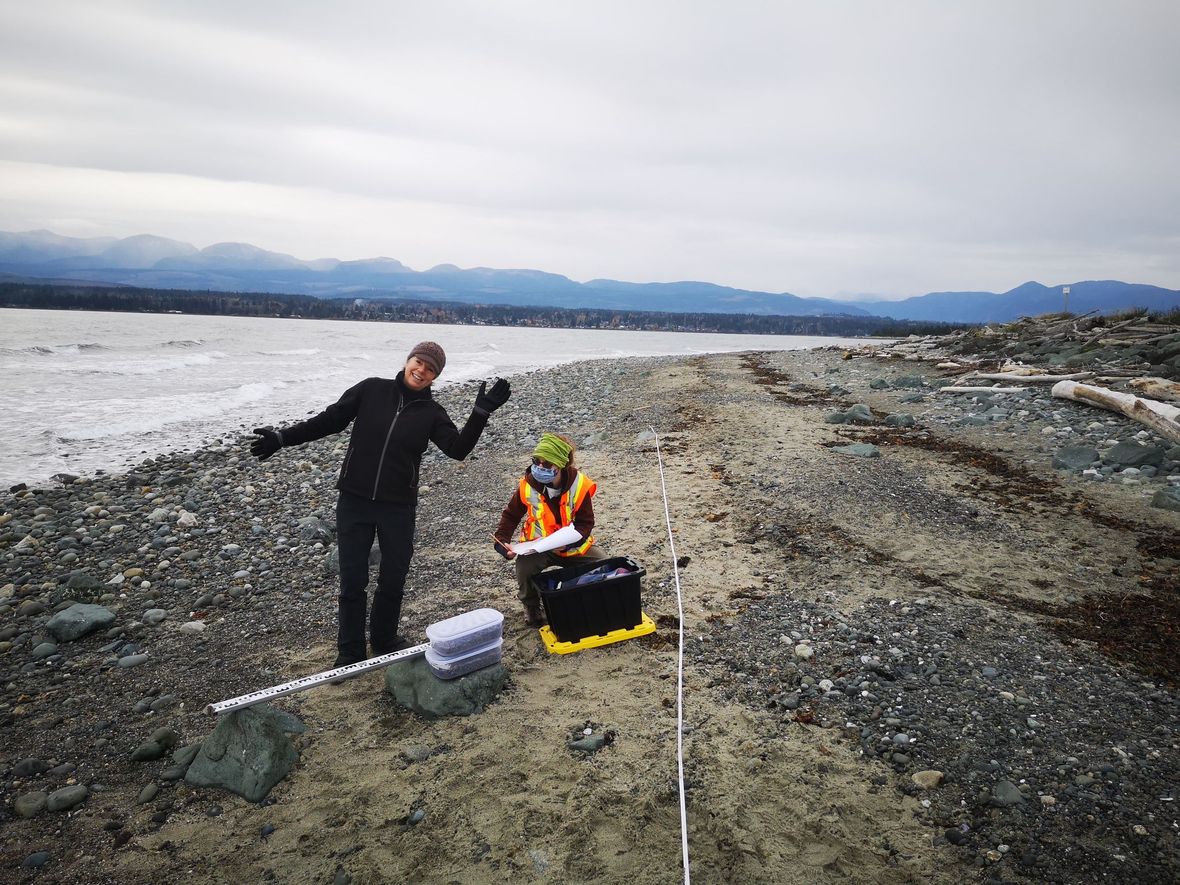Tis the Season for Forage Fish!
Pacific sand lance burrowing in the sand
Pacific sand lance eggs from Kye Bay by V. East
Top: Surf smelt, Bottom: Pacific sand lance by K. Perry
Beach survey in progress by A. Spooner
Project Watershed along with a group of citizen scientists, the K’omoks First Nation, and North Island College student volunteers have been working hard to identify these forage fish spawning beaches since September 2019. This work is linked to a larger initiative to identify forage fish beaches within the entire Salish Sea where forage fish play a critical ecological role as a main food source for marine birds, fish and mammals.
Last November/December, we confirmed that Goose Spit, Air Force Beach, Shingle Spit, Mansons Landing, and Smelt Bay are all positive sites for Pacific sand lance. In addition, Pacific sand lance eggs have recently been found at Kye Bay.
We can confirm a beach is positive for forage fish in a variety of ways:
- Visual scrutiny can reveal live or dead adults or juveniles on the beach.
- Using a microscope to look at sand samples can relieve the small eggs that are laid on the beach and stuck to sand grains.
- An environmental DNA (eDNA) analysis of sand samples can detect forage fish DNA revealing that the fish were on the beach.
South of the Comox Valley Pacific sand lance embryos have been found in Parksville at Community Park Beach and San Pariel; in the Qualicum area at Little Qualicum Beach and Sunnybeach, in Lantzville at Sebastian Beach, in Nanaimo at Piper’s Lagoon, on Gabriola Island at RuBay Beach and on Pender Island at James Point Beach. In November, surf smelt eggs were found around the Victoria area at Tryon Beach and Lillian Hoffar Park Beach in North Saanich, Surfside Beach and Robert’s Bay Beach in Sidney and Cadboro Bay Beach in Saanich/Oak Bay.
We are seeing all this activity as November through to February is prime spawning time for Pacific sand lance, and while many Surf smelt have a broader spawning time frame (some spawn year round), they are also known to spawn in this winter window.
Identifying spawning beaches is a first step towards learning how to better protect and steward these important species. To find out more visit our Forage Fish page or read and download our forage fish brochure.
It must be mentioned that this work could not be completed without our amazing volunteers who have put in too many hours to count in the field, sieving, vortexing, and counting eggs. This research project is also made possible thanks to funding from the BC Salmon Restoration and Innovation Fund and the Pacific Salmon Foundation.
Related Posts
Eelgrass Update
In the fall our restoration team surveyed the three eelgrass beds which were planted with the help of our volunteers back in June. The beds are looking healthy!
Kus-kus-sum: End of Season Wrap-up
Now that we have put the Kus-kus-sum site to bed for the winter, we wanted to give you all a little update on how things progressed this season – lots happened!
Kate McKeown
Meet our new Forage Fish Technician!
Greenshores at Dyke Road Park – Reimagining a Park
On September 20 and 21, over 20 people were on site to help with planting at the Comox Valley Regional District’s (CVRD) Dyke Road Park redevelopment project.
Gartley Beach Green Shores for Homes Project
Project Watershed is teaming up with the CVRD and the Stewardship Centre for BC to do some shoreline restoration at Gartley Beach in Royston.
Fall and Winter Forage Fish Sampling
We’re gearing up for the fall/winter season of forage fish sampling!





